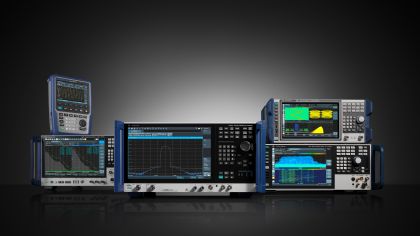Test & measurement technology | Spectrum analyzer fundamentals
Basics of spectrum analyzer measurements
Master key measurements with our step-by-step guides
The spectrum analyzer is an essential instrument on an electronics bench. It detects signals in a selected spectrum range and represents them in a graphical display as magnitude vs. frequency. This allows users to characterize electronic devices by identifying frequency peaks, signal harmonics, interference patterns, etc.
The articles on this page walk you through the fundamentals of spectrum analyzer measurements, with topics covering:
- Basic spectrum analyzer operation
- RF measurements and applications
- How to conduct specific measurements
Want to talk to our experts about your specific spectrum analysis test cases? Please get in touch with us.
























